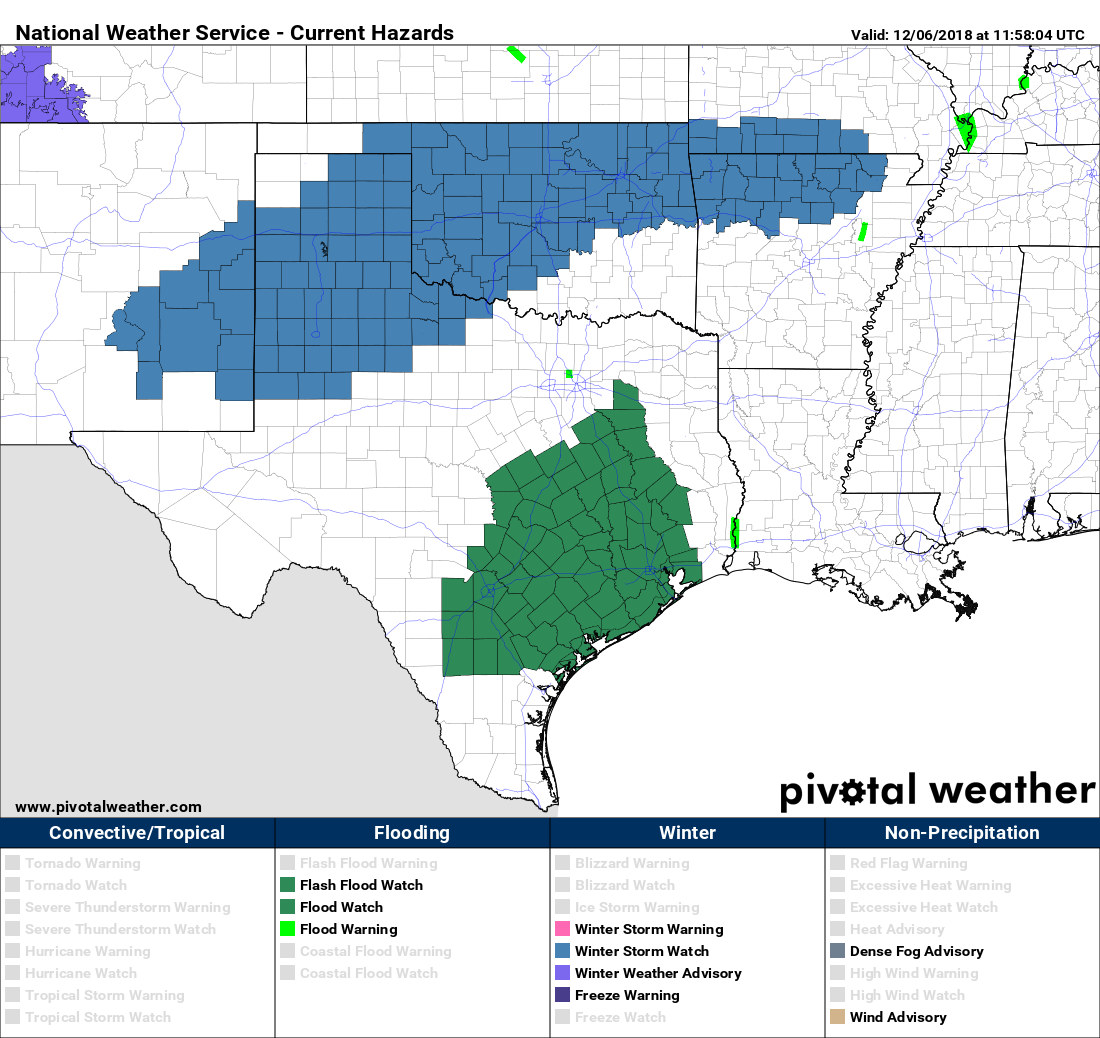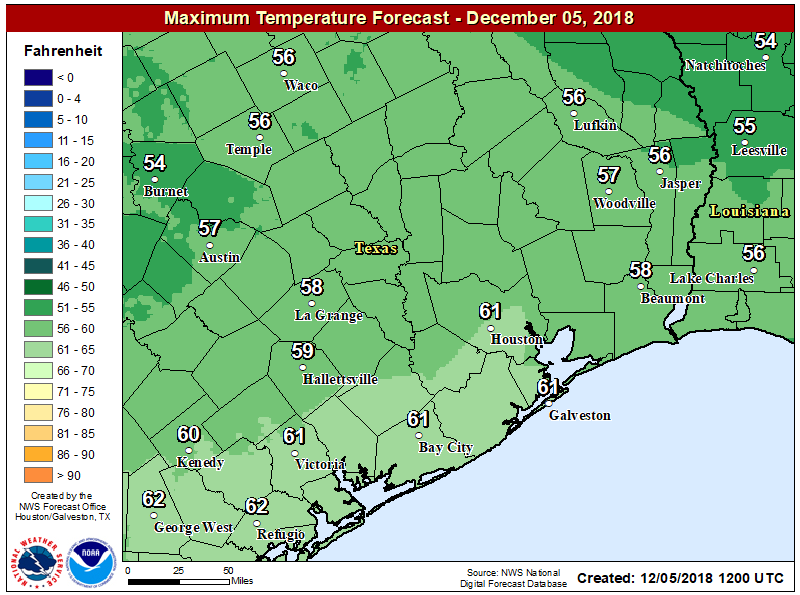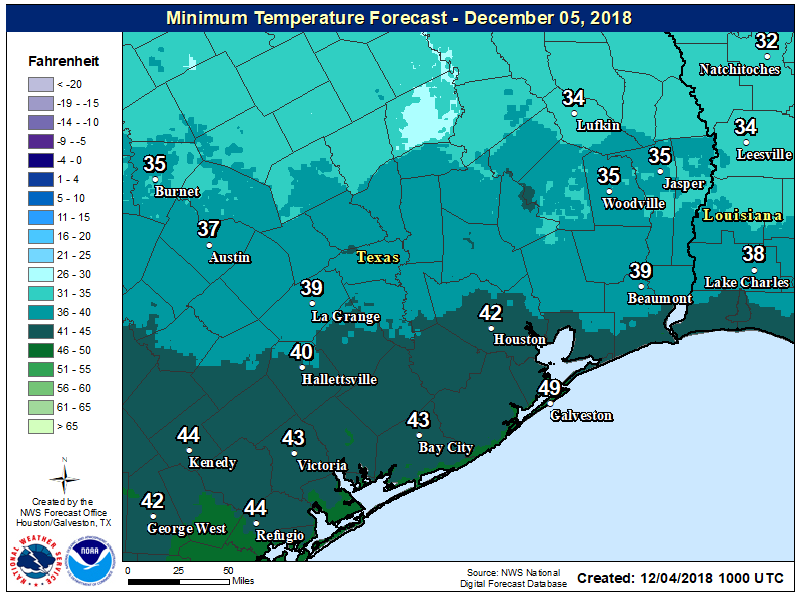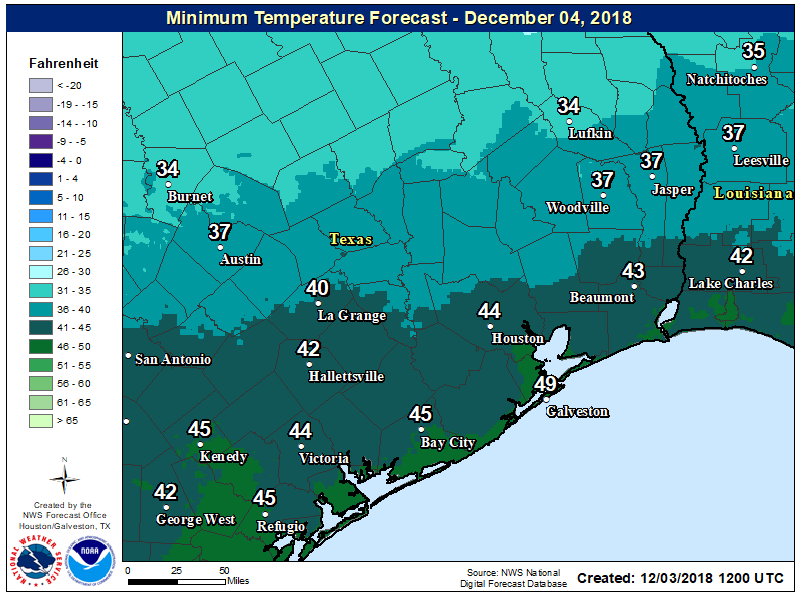The sunny weather we’ve enjoyed this week is now gone, as high pressure has been firmly supplanted by an onshore flow. We’ll see a steady diet of cloud cover through Saturday, with moisture moving onshore that will culminate in the potential for heavy rain on Friday night and Saturday morning. To mark this threat, the National Weather Service has issued a Flash Flood Watch for the region from Friday afternoon through Saturday morning. We discuss this threat below.

Thursday
After a start in the 50s, highs today will climb into the upper 60s under mostly cloudy skies. Southeasterly winds will transport moisture inland throughout the day, and although we can’t rule out a few isolated showers we don’t expect anything significant. Low temperatures Thursday night won’t fall much below the mid-60s for most of the area.
Friday
The upper-level low pressure system will be moving down through Texas, approaching the Houston region from the north-northwest. We expect some light- to moderate rainfall on Friday in the Houston metro area during the daytime, but for the most part, heavier showers should remain west of Harris County until around sunset or so. Highs Friday should climb to near 70 degrees under mostly cloudy skies.




